Link
Every parent with boys faces the problem of how to deal with puberty in boys. The main reason for that is they do not know how to identify the stages of puberty. Also, most parents do not know how to deal with their children at this phase. Because of that, many boys will be mentally down in their puberty period.
We know usually, girls talk about their issues with their moms. But boys do not share their problems with their parents. So it is hard to identify puberty in boys without knowing their transformations. Although you understand the changes, you need to know how to deal with them. Then you can help your kids in their puberty period.
So here we cover the puberty stages, how to identify them, and how to deal with puberty in boys in a nutshell. And we think that the infographic will assist you in helping your kids in puberty.
0 notes
Link
Many loving parents care about their preschoolers, and they have a little doubt about are their children ready for kindergarten? But the thing is, you are not alone. According to the Google search queries, more than four thousand people search monthly for kindergarten readiness in the USA alone. However, our kindergarten readiness checklist will help you identify your child's skills and weaknesses. Then you can support your kid to improve their drawbacks using our kindergarten readiness checklist as a guide.
0 notes
Text
Preschool Programs: Guide to the Best 7 Successful Programs

Preschool helps children between 3years and 5years old to improve their social skills. Also, it provides the necessary academic foundation for the school. So when your kids are ready for school, they have the basic knowledge and the mindset for the school. But, there are various types of Preschool Programs. And their teaching methods are different from one to another.
Also, there are two methods of teaching at a preschool. The first method is learning through discovery. It includes programs with a focus on child-directed activities. Teachers guide the children according to their development levels. However, the other philosophy is more focused on academic qualifications. Also, various types of Preschool Programs use different teaching methods and activities to improve the skills of children.
There are seven types of preschool programs. Namely,
Traditional Preschool Programs
Montessori
Reggio Emilia
Waldorf
High Scope
Bank Street
Parent Co-op Preschool Programs
So, how to choose the correct Preschool Program for your kid? Let us dig a little bit into them.
Traditional Preschool Programs
In a traditional preschool program, the teacher guides children through various academic and group activities according to a schedule. Also, the teacher is responsible for that children get the required knowledge and meet the guidelines set by the curriculum. So basically, in this type of preschool system, the teacher is the central figure in the classroom.
When we look at a traditional preschool classroom, they have colorful toys, posters, and decorations. Also, they are play-based, and children will spend much of their time playing with toys and other familiar items. Children will have different activities during their day in a preschool. They will be assigned to different groups and rotate through those activities. So most of the time teacher will mainly focus on the group.
We can see the following characteristics in a Traditional Preschool System.
Grouping students according to their age
Students have assigned desks and chairs to work
All the students work according to a shared timetable. And all of them have the same time for each subject.
Teachers control the classroom and the discipline of the children
Use worksheets, rote learning, and textbooks
Focus on the tests and grades
Focus on competition
The teacher gives direct instruction to the class according to a pre-determined curriculum.
Montessori
Italian educator Dr. Maria Montessori introduce this method in the early 1900s. It is so different from the traditional educational setting. In this method, children can select what they want to learn, and its child-centered philosophy help to develop creativity, choice-making skills, and logical thinking of children.
Generally, all preschools use playing games to teach kids. So they can learn while they are enjoying the lessons. In Montessori, Play is called the work of Kid. So, the toys available in a Montessori are also helping their learning process.
We can see the following characteristics in a Montessori Preschool System.
Grouping students of various ages in the classroom
Children have the freedom to choose the place they want to sit in the classroom
Students select when and how long they want to work on an activity
Inquiry-based learning
Focus on the process, do not use tests or grades
Students have the opportunity to advance academically at their own pace, without limits
Encourages students to practice self-discipline
Reggio Emilia
After World War II, the People of Reggio Emilia developed a new education system as a solution to it. It had led by a teacher called Loris Malaguzzi, and their idea was to enhance the learning of a child through real-life experiences instead of a fixed curriculum. So that each child develops a love for discovery, forms a personality of their own, and learns to respect others.
According to the Reggio Emilia Approach, all children have full potential with an innate sense of curiosity and endless imagination. They are creative, capable of constructing their learning. And they have a birth interest to explore while they follow their interests. They also stay connected with others. Adults nurture the education of children by providing a rich environment and support. Instead of a one-size-fits-all curriculum, Reggio Emilia uses a child-centered approach.
We can see the following characteristics in Reggio Emilia Preschool Programs.
Children are active participators in their learning
Unique reciprocal relationship with their teachers
They believe the child has a hundred languages. That means Children have multiple ways to express themselves
Educators use a non-contact time to observe children and plan what to offer the children next
Value and encourage child-initiated activity
Challenge and provoke ideas through open-ended questioning
Respect the visions of children
Allow the child to make mistakes
Teachers observe and judge appropriate moments to intervene
Waldorf
The Waldorf education system was developed by Rudolf Steiner nearly 100 years ago. He was an Austrian philosopher, social reformer, and visionary. Waldorf Preschool Programs primarily focus on engaging the head, heart, and hands, or we can say they focus on thinking, feeling, and doing. And they build up these focus areas using academic, arts, and practical skill curriculums in Waldorf Preschool Programs.
Anyhow, Waldorf preschool programs may differ from one to another according to the culture, geography areas, group size, ages, and teacher’s approach. But their principle is to develop the primary three focus areas.
Waldorf programs share the following fundamental characteristics.
The same teacher remains with the same students as they progress until they graduate from preschool.
Introducing academic content and subjects to help child’s intellectual and emotional development
Scientific and mathematical curriculums are enhanced and deepened through music and art.
Introducing subjects like history and geography through practicals such as handwork and woodwork
Use of different teaching styles to improve children’s engagement through their senses, movement, and artistic expression
Encouraging children to listen and respond to the human voice by memorizing songs, poems, tongue twisters, and entire plays by listening to their teachers
Developing politeness and courtesy among the children in the classroom and on the playground
High Scope
The high Scope Approach was developed and introduced by Dr. David Weikart in 1962, and this method used in schools worldwide for all ages and abilities ever since. In this approach, educators encourage children to become decision-makers and problem-solvers based on the Constructivist theories.
Teachers facilitate learning experiences by posing questions and providing various resources and materials. So children can construct their knowledge through exploration and experimentation with the guided support of educators. Also, Adult-Child interactions provide active learning through hands-on experiences that follow a personal interest.
We can see the following characteristics in High Scope Preschool Programs
Approaches to learning
Language, literacy communication
Social and emotional development
Physical development, health, and well being
Introducing Arts and Sciences
Make choices about what they will do, carry on their ideas, and recall them.
Bank Street
Visionary educator Lucy Sprague discovered the Bank Street education model in 1916. She tried to help children grow and reach their full potential. Also, she staffed her nursery with teachers, researchers, and psychologists, and they tried to determine the best environment for that purpose.
The Bank Street preschool program employs a child-centered education system focusing on a variety of curriculum. So students get the chance to do active educational activities to develop their cognitive, emotional, physical, and social growth.
Bank Street programs share the following fundamental characteristics.
Development-Interaction approach
The focus is on educating the whole Children in an experience-based, interdisciplinary, and collaborative setting.
Mixed-age classrooms
Provides a balance between child and adult initiated activities
Educators must set goals, plan strategies for achieving them and follow up to evaluate and revise them as necessary.
Parent Co-op Preschool Programs
A Co-op Preschool program is a learning place for parents and children to learn and grow together. Also, at a co-op, children participate in a rich hands-on learning experience. Their curriculum is play-based and helps children learn all the diverse skills they need for kindergarten.
Also, what makes co-ops unique is that parents are highly involved in working in the classroom, helping with the administration, and attending monthly parent education sessions. Since parents are involved in preschools, they cost less than other preschools. Also, they have unbeatable adult-to-child ratios which support your child’s learning.
We can see the following characteristics in Co-op Preschool Programs
Play-Based, Developmentally Appropriate Curriculum
A Well-Rounded Education & Preparation for Kindergarten
Parents are involved in the Classroom and Coop Governance
Monthly Parent Education & Individualized Advice
Low Cost
Fabulous Adult-Child Ratios
Conclusion
There are many preschool programs, and they follow teaching methods that are different from one to another. However, there are seven good preschool programs to develop a child’s mental, emotional, physical, and social growth. Namely, they are,
Traditional Preschool Programs
Montessori
Reggio Emilia
Waldorf
High Scope
Bank Street
Parent Co-op Preschool Programs
So what is the best program for your kid is really up to the parents. If you read the article, now you have a clear idea about all the seven programs, and you can choose the best one for your child without any hesitation.
Also, if you need to know, What should preschoolers know? Read this article.
Summary
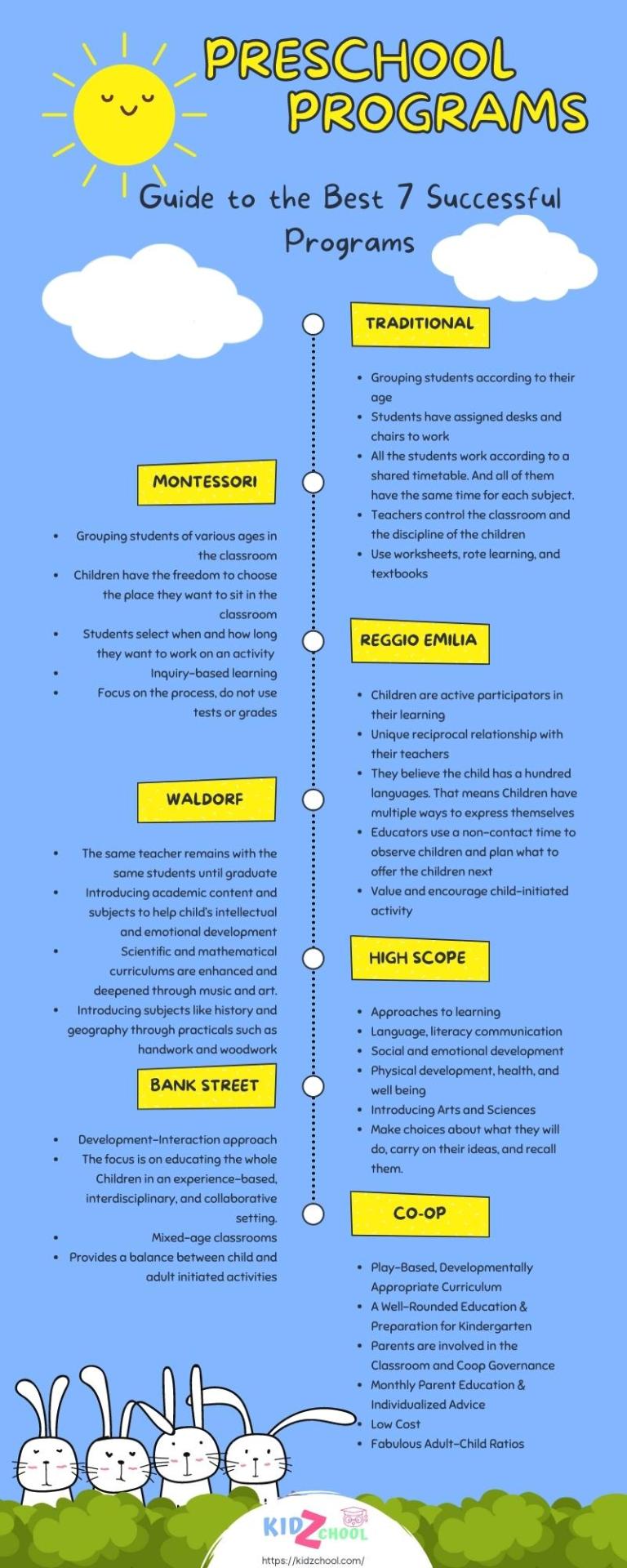
For more Articles and Worksheets, Visit Kidzchool
#earlyeducation#preschoolers#preschool#parenting#childcare#preschoollife#preschoolactivities#preschoolathome#preschoolart#preschoolmom#preschoolfun#preschools#preschoolactivity#preschooldays#preschoolstyla#preschoolcrafts#preschoolgraduation#preschoolisfun#preschoolkids#preschoolplay#preschoolstyle#preschooleractivity#preschoollearning#preschoolbandung#preschoolclass#preschoolcraft#preschoolcreations#preschoolerlife#preschoolhomeschool#preschoolideas
0 notes
Text
Preschool Activities at Home: Fundamentals You Need To Know
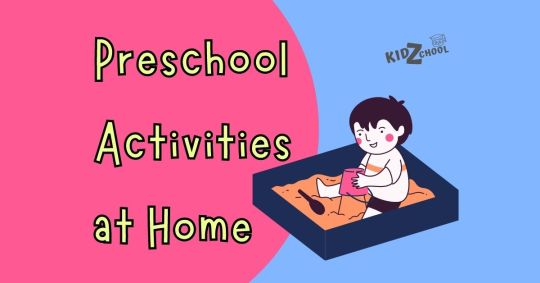
First of all, this article is not an activity list. This article will explain the significance of doing preschool activities at home. Just think for a second, are your kids saturated by mobile phones, TVs, or Laptops? I think the answer will be Yes for most of you. In the past, parents used various physical activities to teach the kids, but with the technology, now we go to Youtube and play a video of an activity or nursery rhyme and then show it to them.
The thing is, by doing that, you will blunt the creative mind of children. So whether your child is homeschooling or not, it is very significant to work from home to develop the five basic skills of a preschooler.
If you are wondering about what are the skills? Please read this article, and you will get a better understanding of those skills and the preschool education system.
Why are Preschool activities at home important?
As a toddler, children get the required physical experience using their senses for encountering substances. Also, they discover how the things fit together using their creative little brains. In addition to that, parents always teach basic things like the alphabet, counting numbers, colors, and shapes to their toddlers. So, the kids have the demanded foundation for learning at preschool age.
Then at preschool, they are going to make connections with their peers. They will share their knowledge. That’s why kids at that age learn things fast. They share their experiences with peers, and the funny thing is they have an incredible power to understand each other. For example, my child once asked me about Helicopters using a funny word (Udapoppa), I couldn’t answer him because I didn’t get the word. But the funny thing is his friend explained to me that Udapoopa means Helicopter. So, meeting peers and engaging them with activities is so significant. That will build a strong foundation for team-working and leadership in a child’s mind.
So, make sure to add group activities to your Preschool Activities at Home.
What are the activities that children relish?
They like to enjoy their activities. So always remember to do the learning activities with fun. Don’t tell them that they are learning. Teach them through fun activities, and it is the best-proven method to teach kids at preschool age. Also, make sure to appreciate them at the end of an exercise. Tell them that “they are awesome.” Give them Star marks. Also, make sure to correct them if they are doing something wrong. And never give an appreciation if they do not deserve it. Because if you do so, they won’t try to improve themselves.
So basically, children like to have fun. There are a lot of fun methods to teach children at this age. Also, you can create your versions of fun activities using those as a guide. The only thing you have to remember is kids like to have fun. So deliver it to them. Then they will love it and learn without any complaint.
Types of Preschool Activities at Home
There are various types of activities for preschoolers. You can easily google and find them. But the problem that most of you have is how to plan those activities for your kid. So I’m recommending you to read this article first. Then you will have a general idea about what should preschoolers know?
We can divide preschool activities into the following categories according to their type.
Sensory Preschool Activities
Learning Activities at Home
Messy Preschool Activities
Let us dig a little deep into those categories. Then you will get a clear idea about preschool activities at home.
Sensory Preschool Activities at Home
Sensory activities help preschoolers to activate and boost their senses. These activities mainly focus on stimulating touch, sight, and hearing because those senses are the most accessible.
Kids interact with the world using the five senses (touching, tasting, hearing, seeing, and smelling). And they learn a lot about their surroundings and make sense of many new things they are experiencing through the activities and play they are doing each day.
So it is significant to develop those senses using sensory activities and help them explore the world as a true adventurer. Check out the list below for simple sensory play ideas that your preschooler will love!
Adventure Basket
Get an empty basket or a bowl and fill it with various items. For example, if you are going to familiarize your child with nature, you can fill it with leaves, rocks, and different flowers, or your goal is to teach forms, you can put different types of shapes into the basket. Then explore and explain it with the kid. And also, remember safety first.
Playdough
Playdough helps to improve the touch senses of fingers. Also, its soft and squishy texture ensures that your child will enjoy hours of rolling, slicing, and chopping as they play.
You can make dough using household supplies and even add colors and scents. They may last only a few weeks, but it will be fun to make playdough with your kid. If you are not interested in making sensory dough, you can purchase them at the local market.
Taste test challenge
This activity is a fun one. I guarantee you kids will love it. To create a taste test you, only need to blindfold their eyes and offer them various foods they love. As they taste each fruit, have them do their best to guess what they are tasting!
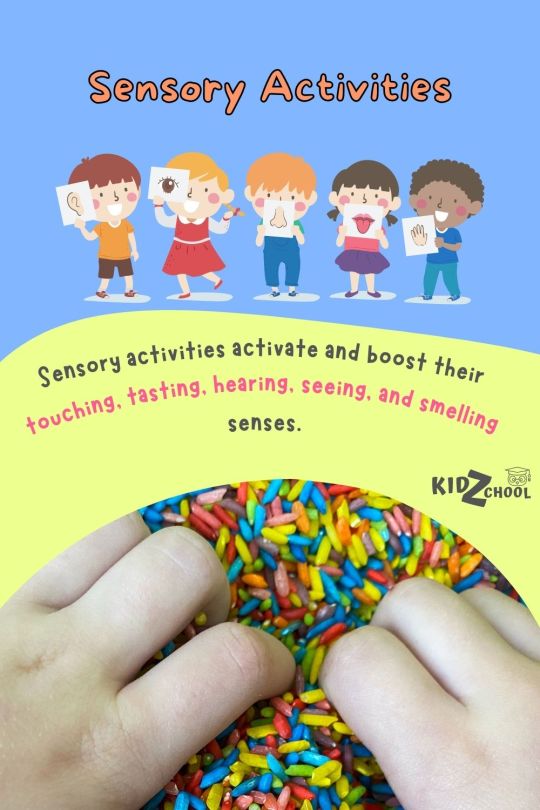
Learning Activities at Home
Learning activities help kids to get the necessary foundation for their academic requirements. These activities can improve reading and writing skills, fine motor skills, and Math and Science knowledge. So it is significant to add learning activities to the curriculum. Check out the list below for simple sensory play ideas that your preschooler will love!
Reading and Writing Activities
Get preschool books on just about any topic, and then read aloud together with the child. And explain the difficult things to him. Also, help the kid to imagine things. Use posters to build literacy skills.
Use a Sand tray to control and form letters as writing activities. That will help to build up the sensory skills too. Also, you can use coloring book activities that will improve the tripod grip. In addition to that, coloring books help to build up creativity.
Fine Motor Skills
Fine motor skills help coordinate the small muscles that control the hand, thumb, and fingers. They include movements like grasping and pinching. However, they are the foundation of writing, drawing, cutting, using utensils, etc. So developing fine motor skills is essential for preschoolers.
You can choose simple self-care activities like
Turning doorknobs, keys, and locks
Putting a plug into a socket
Buttoning and unbuttoning clothes
Tying shoelaces
Or, you can choose academic activities like
Drawing and painting
Tracing
Cutting with scissors
Pasting and gluing
Measuring with a ruler
Math and science knowledge
Math and Science is significant to develop the logical thinking of a kid. By doing activities for them in preschool, their decision-making skills in kindergarten will improve too.
For that, you can do the following activities,
Introduce basic Shapes and show the shapes in nature.
Explore the Volumes by Pouring liquid into containers of various sizes.
Counting Games
Explore nature and its components
Color Mixing
Mixing it with Mr. Blue is a great activity book that explains color mixing for preschoolers. (This is not an affiliate link)
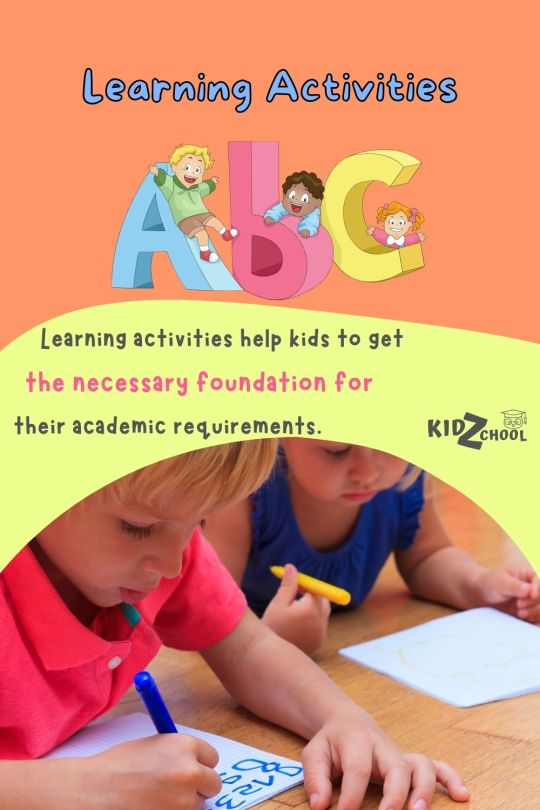
Messy Preschool Activities at Home
Children love to play, especially if it involves messy play. They like to get dirty. So, let them enjoy while they are learning. Messy activities encourage children to explore substances. That will help them in the future when they are in grade school.
So let them play in the mud. Also, you can do the activities like paint splash, handprints with paint, Tie Dye Arts, and water games. Choose your imagination and create new games and comment on them below. So you can share them with the world.
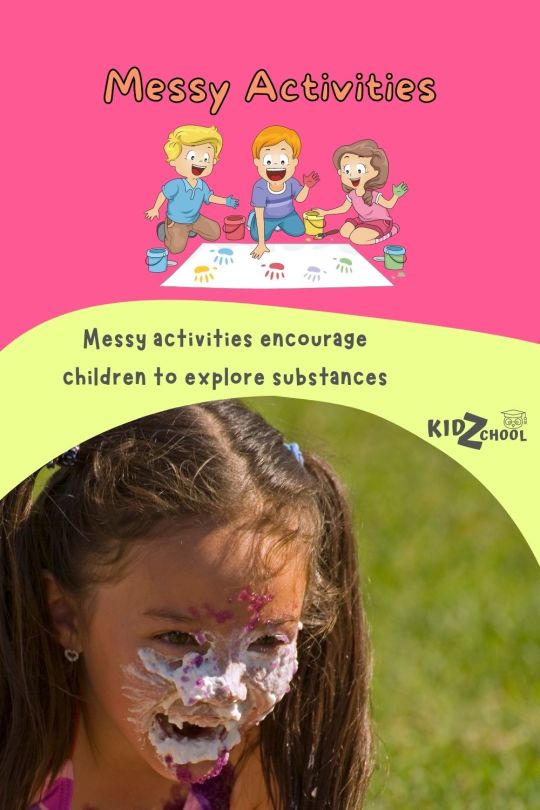
Conclusion
So now I think you have a pretty good idea of what Preschool Activities at Home are promising for children. So as a summary, it is significant to do preschool activities at home.
There are many activity lists that you can find when you are googling. But how to choose the right one for your kid is the crucial point. So we divide the whole activities into three main categories. Namely,
Sensory Activities
Learning Activities
Messy Activities
So you can create a curriculum for your kids using a mix of activities from these categories. If you do not know how to make a curriculum, as I mentioned before, please read this article.
For more Articles and Worksheets, Visit Kidzchool
#preschools#preschoolactivity#preschooldays#preschoolstyla#preschoolcrafts#preschoolgraduation#preschoolisfun#preschoolkids#preschoolplay#preschoolstyle#preschooleractivity#preschoollearning#preschoolbandung#preschoolclass#preschoolcraft#preschoolcreations#preschoolerlife#preschoolhomeschool#preschoolideas#preschoolathome#preschoolart#preschoolmom#preschoolfun#preschoolactivities#preschoollife#preschoolers#parenting#childcare#earlyeducation
0 notes
Text
What Should Preschoolers Know: Create a Rich Valuable Curriculum
Did you ever wonder about What Should Preschoolers Know? Also, this could be a serious question for you if you are planning to homeschool your child during the preschool period.
Preschool curriculums are going to be different from one preschool to another. The reason for that is they do not govern by the standards that apply to K-12 education.
But the thing is, we can categorize these whole preschool curriculums into five main categories. And if you know these five categories, you can easily make your curriculum and teach your child at home during the preschool period. And We know it will be a great help for you during this pandemic situation.
So keep reading until the end of this article. Then you will be able to answer any question regarding what preschoolers need to know.
The Concept behind Preschool Education
As I mentioned before, no standards like K-12 education apply to the preschool education system. Because of that, the curriculums at one preschool may vary significantly with another. So individual preschools or parents who homeschool their children have the freedom to teach what they think is best for their kids as they prefer.
For example, Christian preschools may concentrate more on religious education in their curriculum, while Preschool programs like Bank Street may focus on a child’s mental, social, emotional, and physical growth.
Also, teachers have the freedom to adjust their teaching methods according to the individual children in their classroom. For that matter, they can use the traditional preschool teaching method or the Montessori teaching method. In traditional preschool teaching, the teacher is the central figure, and she guides the children through various activities according to a specific schedule. In a Montessori, the teacher follows the lead of the children. They are free to make their own choices, and the teacher will guide them with some boundaries set by her.
In addition to all of that, teachers can use various methods to teach their children. For example, think you want to teach your children the alphabet. For that, you can use a song like Now I Know My ABC, or you can interact with them with some activities like I Spy with My Little Eyes.
Anyhow, the purpose of preschool education is to prepare children for kindergarten. For that, you must improve the following five skills of children. So add various activities for the curriculum to develop those skills. Then by the time they graduate from pre-K, they will have learned and discovered a lot.
Basic Academic Skills
Academic skills mean the improvement of kids’ writing and reading skills. As we can see, most of the time, parents try to teach their toddlers (Ages 1-3 years) the alphabet, numbers, colors, etc. So they have a rough understanding of those things. In preschool, using various activities, we can improve those basic understanding as a skill.
If you ask any parent what they hope to achieve by sending a child to a preschool, their answer will be the above reason. And they are right. Academic activities are significant because they help to develop the following skills.
What Should Preschoolers Know
Identify and state their name and write the first name with the first letter upper case and remaining letters lower case.
Use writing tools such as pens and pencils with a three-finger grip.
Count to at least twenty and identify numbers 1-10 in random order.
Identify basic geometric shapes (triangle, circle, square, rectangle, oval, star, rhombus, and heart)
Identify colors (red, blue, green, yellow, orange, purple, black, white, brown, pink).
Use the finger to count items to ten accurately.
To rhyme words.
Sort objects by color, shape, and size.
Understand sequencing (first, middle, last).
Retell simple stories in sequence.
So, as you can see, academic skills are so significant. They help to develop the basic writing and reading of a child. Because of that reason, activities that help to improve academic skills must include in the preschool education curriculum.
So if you have wondered, what should preschoolers know? Now you know the academic skills that preschoolers need to be able to.

Communication Skills
Preschool age is the age where children begin to talk accurately. So developing communication skills are so significant. Although, as a toddler, they already speak a little bit, they will improve their vocabulary rapidly by the ages of 3 to 5. So by doing the correct activities and using accurate methods, we can improve their communication skills.
So, at the end of the preschool period, a child needs to be able to do the following things,
What Should Preschoolers Know
Use age-appropriate speech sounds
Speak in 4-5 word sentences
Follow simple directions
Talk and explain events at home and school
Understand WH questions
Carries on a conversation
Retell a simple story using sentences.
Anyhow these skills may vary with the child’s age. So if you have wondered, what communication skills should preschoolers know? Now you know.

Fine Motor Skills
Fine motor skills help coordinate the small muscles that control the hand, thumb, and fingers. They include movements like grasping and pinching. However, they are the foundation of writing, drawing, cutting, using utensils, etc. So developing fine motor skills is essential for preschoolers. By improving those skills, your children will be able to do the following,
What Should Preschoolers Know
Manipulate scissors
Cut on a line
Use a three fingers grasp
Write name
Copy simple shapes/pre-writing strokes
Have a hand preference for writing
So if you have wondered, what should preschoolers know? Now you know the fine motor skills that preschoolers need to be able to.

Self Improvement
Children have the drive to be independent and do things on their own. This procedure is a healthy part of normal child development. As children grow, they learn to do more and more tasks.
So self-improvement skills are one of the first ways children develop the ability to plan and sequence task performance, organize the necessary materials, and improve the refined physical control required to carry out daily tasks. By developing those skills in preschool, a child will be able to do the following,
What Should Preschoolers Know
Put clothes on independently
Take care of their belongings and protect them
Clean up toys and materials
Complete bathroom routine independently
Go to Sleep and make the bed on their own
So if you have wondered, what should preschoolers know? Now you know the Self-improvements that preschoolers need to be able to.
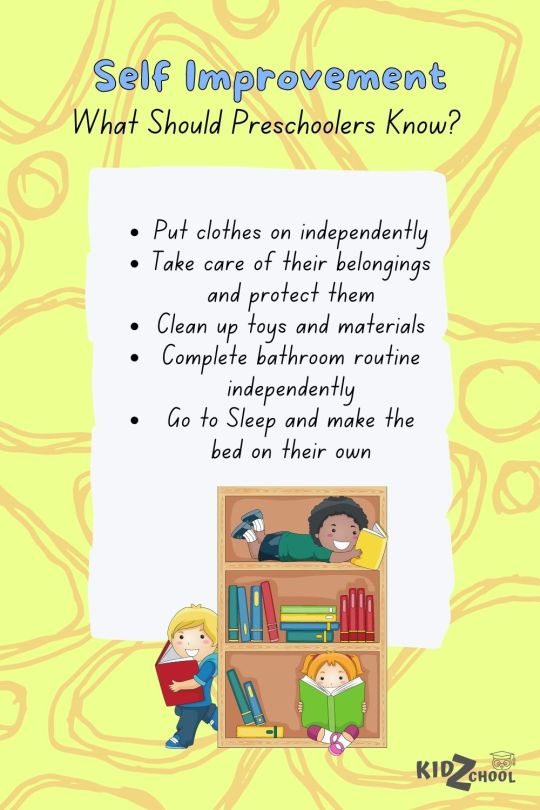
Social and Emotional Skills
In preschool, children are learning to talk about their feelings. However, the development of Social and Emotional Skills is not simple as expressing emotion. It is the foundation for the personality of children. Social-emotional development helps to be independent in following habits.
What Should Preschoolers Know
Interacting more with peers
Engaging in meaningful relationships with others
Controlling emotions
Developing a positive self-image
Express wishes and preferences clearly
Play, negotiate and compromise with others
Separate from parents without being upset
These skills are essential for successful school and home experiences. And also, these skills are required for the overall growth of children. Also, they build the social-emotional abilities of children that influence their success in school and life.
So if you have wondered, what should preschoolers know? Now you know the Social-emotional development that preschoolers need to be able to.

Conclusion
I think now you have the answers to the question What should preschoolers know? So as a summary, no standards like K-12 education apply to the preschool education system.
Because of that, the curriculums at one preschool may vary significantly with another. However, we can categorize their learnings at a preschool into five main categories. Namely,
Basic Academic Skills
Communication Skills
Fine Motor Skills
Self Improvement
Social and Emotional Skills
Also, If you want to create a curriculum for a preschooler, you can focus on the above areas and add activities to develop the mentioned skills.
For more Articles and Worksheets, Visit Kidzchool
#preschoolers#preschoollife#preschoolactivities#preschoolathome#preschoolart#preschoolmom#preschoolfun#preschools#preschoolactivity#preschooldays#preschoolstyla#preschoolcrafts#preschoolgraduation#preschoolstyle#preschooleractivity#preschoollearning#preschoolbandung#preschoolclass#preschoolcraft#preschoolcreations#preschoolerlife#preschoolhomeschool#preschoolideas#preschoollunch#parenting#early childhood development
1 note
·
View note